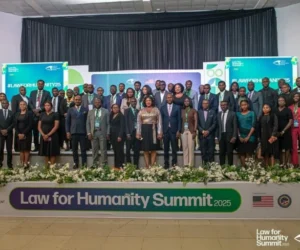The African Court on Human and Peoples’ Rights (AfCHPR) and the African Commission on Human and Peoples’ Rights (ACHPR) have released the Communiqué, guidelines on the submission and transfer of cases adopted during their second complementarity retreat, held from 2-3 June in Arusha, United Republic of Tanzania.
As part of the dissemination of outcomes, a Highlights Video has also been produced to visually capture the key messages, exchanges, and collaborative spirits that defined the retreat.
This was contained in a communique that was sighted on Sunday by Blueprint in Abuja.
The documents as contained in the communique captured the shared vision of the two African Union human rights organs in order to deepen cooperation and enhance the efficiency of the continental human rights system.
Among other things, they outline practical steps for implementing the Complementarity Roadmap (2023–2028) and consolidating achievements under their collaborative framework.
Among the highlights, the Communiqué records decisions to “extend the complementary roadmap to 2028, integrating complementarity objectives into each institution’s upcoming Strategic Plans (2026–2028) among others.
The two institutions also looked at renewing the framework for staff exchange, first signed in 2022, to continue fostering institutional learning and collaboration.
They also want to advance the creation of the African Jurisprudence Database (AJUDATA) as a shared repository of jurisprudence and legal references.
It reads further: “Jointly mobilize support for the appointment of an AU Champion for Human and Peoples’ Rights and the operationalization of the AU Legal Aid Fund; and
Develop promotional materials and shared tools to enhance engagement with states and monitor the implementation of decisions.
“The newly adopted Guidelines on the Submission and Transfer of Cases formalize agreed procedures between the Court and the Commission, setting out clear considerations and criteria for case handling and coordination.
“The Guidelines also provide a framework for follow-up on the implementation of decisions, thereby reinforcing complementarity in practice.
“The Court and the Commission reaffirmed their commitment to working closely with Member States, AU organs and other key actors to ensure a stronger, more coherent and effective African human rights system,”








